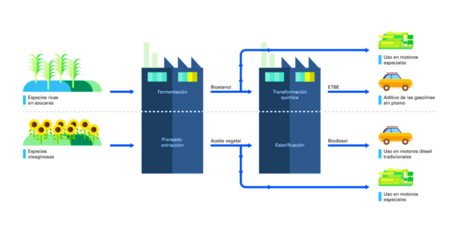
Sensors and BioMems Laboratory Bioengineering Department
The lives of millions of people can change tragically from the moment they lose a part of their bodies due to accidents, diseases, malformations because they are unable to do their daily activities. A study revealed that in 2017, 57.7 million people were living with limb amputation due to traumatic causes [1]. Only in the United States, the NGO Amputee Coalition estimated that there are nearly 2 million people with limb loss, and this number could raise to 3.6 million for 2050, being below-the-knee amputation (BKA) the most frequent of them [2].
As a response to these problems, bionics, defined as “the science of creating artificial systems or devices that can work as part of living organisms” [3], is introduced as a bridge between human beings and their desire to recover their inherent abilities. This term was first used combining the prefix “bio” meaning life with the “nics” of electronics. Nowadays, experts on this science produce prostheses integrating different branches of engineering such as mechanics, electronics, information processing, etc., as well as life sciences [4].
In this field, companies such as Ottobock and Össur stand out, offering partial or total upper and lower limb prostheses for different applications principally aesthetics, rehabilitation, or sports. One of these is the Bebionic hand, an innovative product being capable to execute 14 different grips and hand positions [5], or its competitor, the i-Limb Quantum hand with titanium digits for a 50% increase in carry load and providing up to 30% more grip force [6].
Figure 1. Composition of the Myo Plus TR prosthesis. Source: Ottobock.
However, existing myoelectric prostheses haven’t yet achieved to be completely compatible with humans, due to the problems with functionality, comfort, and the cognitive load that they require for their use, which is why there is a prostheses abandonment rate of 30 % to 50 % [7].
To solve these problems, multiple engineers are working on the use of new technologies to increase the number of movements of the prosthesis joints, use lighter materials such as silicones and urethanes, optimize data processing, etc. But, one of the most interesting challenges is to recover the proprioception sense of the amputated limb, that is, feeling the relative position of the prosthesis as if it would be an extension of the human body. For this purpose, a team of the MIT developed the Agonist-antagonist myoneural interface (AMI), whose method consists on connect the nerves of a person to their bionic prosthesis, through the surgical link between an agonist and an antagonist muscle during the amputation in order to preserve the proprioception of the muscle tendon. Then, this junction is connected via artificial electrodes to microcontrollers located in the bionic prosthesis which decode the signals from each AMI to move the motors. This way, a bidirectional flow of information is achieved since it is possible to move the prosthesis and feel its position, movement and force at the same time as if it were a real limb [8].
Figure 2. Agonist-antagonist myoneural interface architecture and its operation in the human body. Source: Srinivasan et al. Science Robotics.
The solutions for the previous cases are in progress, but it’s also important to consider the large number of patients whose lives are affected due to a limited mobility or some type of paralysis. Statistics show that annually 55.9 million people suffer from acquired brain injury, 15 million suffer from stroke and 2.8 million people live with multiple sclerosis (MS) [9].
For this reason, companies like Ekso Bionics and Rewalk Robotics offer a wide range of robotic exoskeletons (external devices worn on the user’s body to enhance their capabilities) that received FDA clearance for rehabilitation. Besides, they also sell exoskeletons for industrial application which reduce fatigue and prevent injuries caused by repetitive tasks, increasing the productivity at work [9, 10].
Figure 3. Rehabilitation of a patient with the use of an exoskeleton. Source: Ekso Bionics.
Finally, despite the efforts made, there is still a long way to go. Even though there are many experimental technologies developed at different universities, they are not yet approved for sale. In developing countries, low-cost technologies that allow the manufacture of these devices is progressing and represents a great opportunity for bioengineering professionals in Peru, who in turn could provide hope to those that have lost it.
Sources:
[1] McDonald, C. L., Westcott-McCoy, S., Weaver, M. R., Haagsma, J., & Kartin, D. (2021). Global prevalence of traumatic non-fatal limb amputation. Prosthetics and orthotics international, 0309364620972258.
[2] Amputee Coalition. (2015, January 13). Limb loss statistics. https://www.amputee-coalition.org/limb-loss-resource-center/resources-filtered/resources-by-topic/limb-loss-statistics/limb-loss-statistics/
[3] Cambridge. (n.d.). Bionics. In Cambridge dictionary. https://dictionary.cambridge.org/dictionary/english/bionics
[4] Australian Academy of Science. (2017, September 26). Bionic limbs. https://www.science.org.au/curious/people-medicine/bionic-limbs
[5] Ottobock. (n.d.). Bebionic hand EQD. https://www.ottobock.com/en-us/product/8E70
[6] Össur. (n.d.). I-LImb® quantum bionic hand. https://www.ossur.com/en-us/prosthetics/arms/i-limb-quantum
[7] Espinosa, M., & Nathan-Roberts, D. (2019, November). Understanding prosthetic abandonment. In Proceedings of the Human Factors and Ergonomics Society Annual Meeting (Vol. 63, No. 1, pp. 1644-1648). Sage CA: Los Angeles, CA: SAGE Publications.
[8] MIT Media Lab. (n.d.). Agonist-antagonist Myoneural interface (AMI). https://www.media.mit.edu/projects/agonist-antagonist-myoneural-interface-ami/overview/
[9] Ekso bionics. (2022, November 12). Ekso bionics home. https://eksobionics.com/[10] ReWalk Robotics. (2021, June 10). ReWalk™ personal 6.0 exoskeleton for spinal cord injury. https://rewalk.com/rewalk-personal-3/




